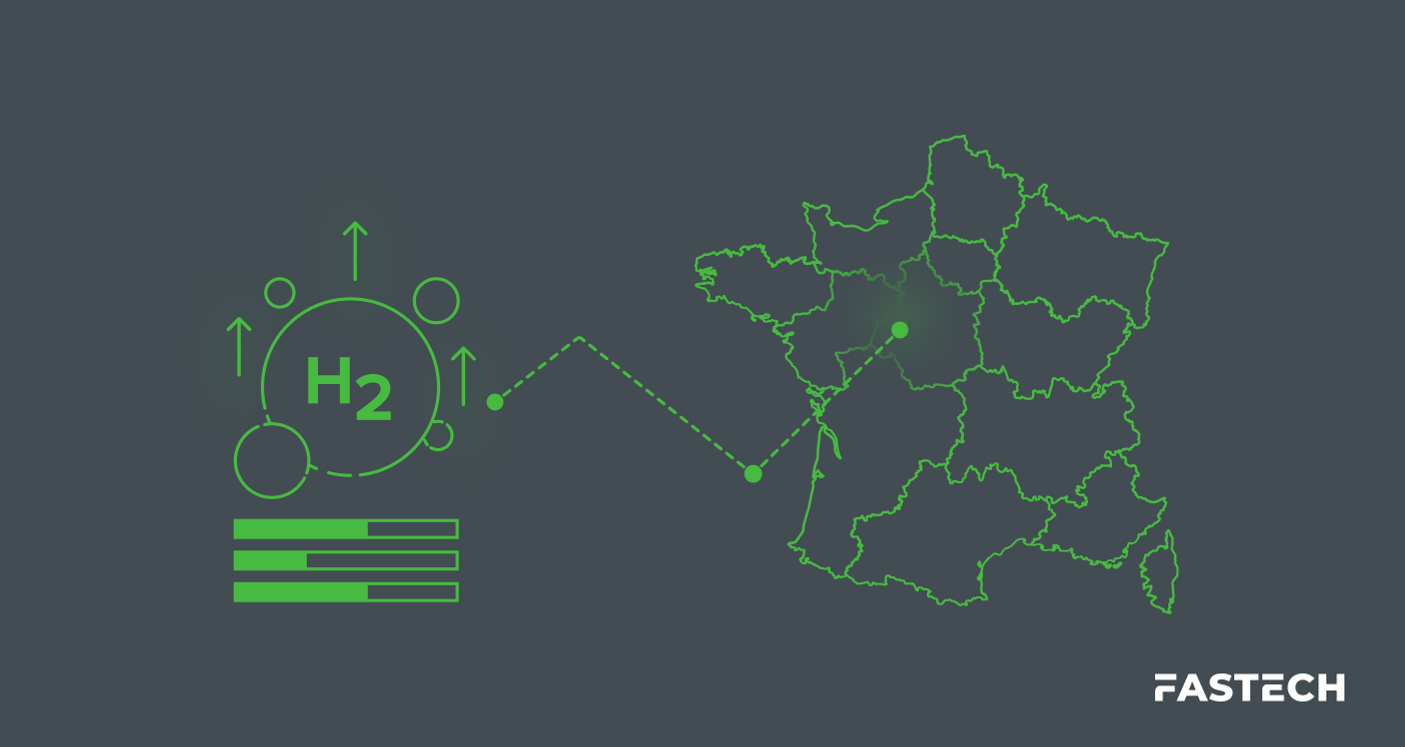Hydrogen Fuel Logistics: Methods and Challenges

As demand for sustainable alternatives to conventional energy grows, hydrogen-based solutions are increasingly viewed as a top contender. In a 2023 Bosch study, 41% of participants saw hydrogen as the biggest driver for sustainability, tied with climate engineering.
This is partly due to hydrogen’s impressive energy capacity relative to mass. However, hydrogen’s low density presents logistical challenges in its storage, transportation, and distribution as a fuel for powered vehicles and fuel cell trucks. Understanding these processes is critical for overcoming these challenges.
Below, we’ll look at hydrogen fuel cell logistics, potential obstacles, and solutions.
Hydrogen Fuel Storage Methods
The first element of hydrogen fuel logistics is efficient storage. Hydrogen is stored in two ways:
- Physical-based storage – Hydrogen can be stored in a gaseous or liquid state. As a gas, it requires compression and constant pressure of ~5,000 to 10,000 psi. As a liquid, it goes through liquefaction and is stored at constant cryogenic temperatures below -252.8°C. This method is more suited for long-distance transportation, such as for long-haul trucking and fuel cell electric vehicles.
- Material-based storage – Hydrogen can also be stored in combination with other solid materials through absorption (stored within) or adsorption (stored on). Common examples include liquid organics, interstitial hydrides, and complex hydrides.
Because of the inherent difficulty and costs required to maintain sufficient storage capacity with the specific conditions mentioned above for physical storage, research into new material-based solutions is ongoing.
Hydrogen Transportation Methods
Hydrogen fuel is transported in a gaseous or liquid state.
Vehicles typically transport gaseous hydrogen by truck, using trailers loaded with cylinders that maintain pressures between 180 to 250 bar (~2,600 to 3,600 psi). These “tube trailers” carry multiple cylinders, each holding around 560 to 900 kg of hydrogen.
As a gas, hydrogen can also be transported in pipelines, like natural gas and other similar resources. About 1,600 miles of pipelines dedicated to hydrogen fuel transportation are active across the US.
Liquid hydrogen transportation requires “tanker” trucks that carry super-cooled containers maintained at about -253°C. Although the liquefaction process consumes significant energy, it remains more efficient for long-distance, large-scale transport, ideal for long-haul trucking and heavy-duty fuel cell trucks.
Hydrogen Fuel Distribution
Once hydrogen has been carted from the point of production to the point of use, there is on-site storage to account for. As with transport, methods differ for gas and liquid hydrogen.
Liquid storage tanks (“dewars”) are the most common method for on-site storage. The same temperature requirements apply to transport, along with assurances for a low-pressure (~5 bar or 73 psi) environment to prevent excess “boil off.”
Gaseous storage requires high-pressure cylinders similar to those used for transport; these may be all metal (Type I) or combinations of load-bearing metal (Type II) and non-load-bearing metal (Types III and IV) with other materials.
Challenges in Hydrogen Fuel Logistics
Some of the biggest challenges in hydrogen fuel logistics stem from its basic chemical properties. Namely, three of the most significant difficulties to navigate are the following:
- Cost factors – Although hydrogen offers the most energy by mass of any fuel source, it exists at relatively low densities at ambient temperatures. It requires some combination of large unit volumes and/or capacities for higher energy density at scale.
- Infrastructure requirements – Hydrogen fuel logistics necessitate apt roads, waterways, and pipeline infrastructure beyond the capacities needed for transport vessels and on-site storage. This creates burdens for (and may require buy-in from) municipalities.
- Safety concerns – Hydrogen fuel poses threats of fire and explosions. The Occupational Safety and Health Administration (OSHA) publishes several standards for job sites where hydrogen fuel cells are produced and used, all of which need to be followed precisely.
These challenges, especially in scaling infrastructure and maintaining safety, require careful planning and collaboration between public and private entities.
The Latest Innovations in Hydrogen Logistics
As the hydrogen fuel market evolves, new technologies and strategies are addressing the challenges of cost, infrastructure, and safety in hydrogen fuel logistics. Recent innovations are helping scale the industry more efficiently and sustainably.
Hydrogen Supply Chain Models
The National Renewable Energy Laboratory (NREL) has developed advanced models such as the Scenario Evaluation and Regionalization Analysis (SERA), which optimize hydrogen infrastructure buildout. This tool helps forecast hydrogen demand and minimizes costs by optimizing where and when infrastructure should be deployed, supporting both transportation and industrial applications.
Advances in Pipeline and Transportation Infrastructure
Pipelines remain a key method of hydrogen transport, but improvements in blending hydrogen with natural gas and other technologies are increasing pipeline efficiency. Researchers are also exploring the use of hydrogen carriers and cryogenic transportation to make long-distance logistics more viable, particularly for large-scale projects in regions like California, where hydrogen systems are being designed for future growth.
Innovative Storage Solutions
New storage technologies, such as advanced cryogenic tanks and solid-state storage (e.g., metal hydrides), are reducing the inefficiencies traditionally associated with hydrogen storage. These advancements are key for expanding hydrogen use in sectors such as aerospace and marine transport, where weight and storage density are crucial.
Making Room for the Fuel of the Future
As ongoing research uncovers efficiencies in processes like liquefaction and storage, Hydrogen’s potential for sustainable clean energy infrastructure will only continue to increase.
However, the challenges of storage, transportation, and hydrogen distribution detailed above need to be taken seriously by engineers, owners, and managers looking to integrate hydrogen fuel.
FASTECH is a leading provider of hydrogen and other energy solutions. We’re committed to establishing the foundation for a hydrogen-powered future, including streamlining logistics.
Contact us today to learn more about our hydrogen infrastructure services.




